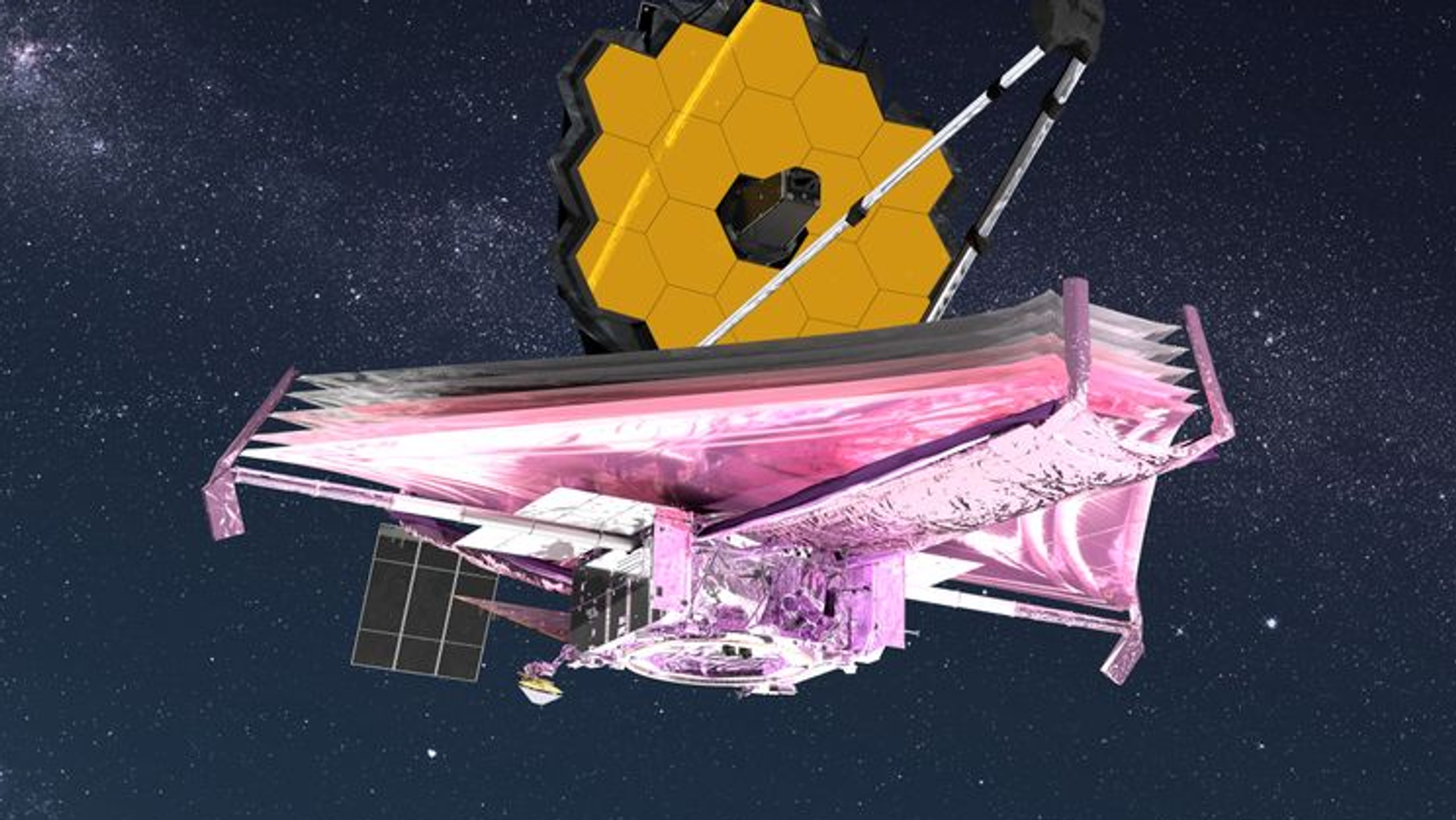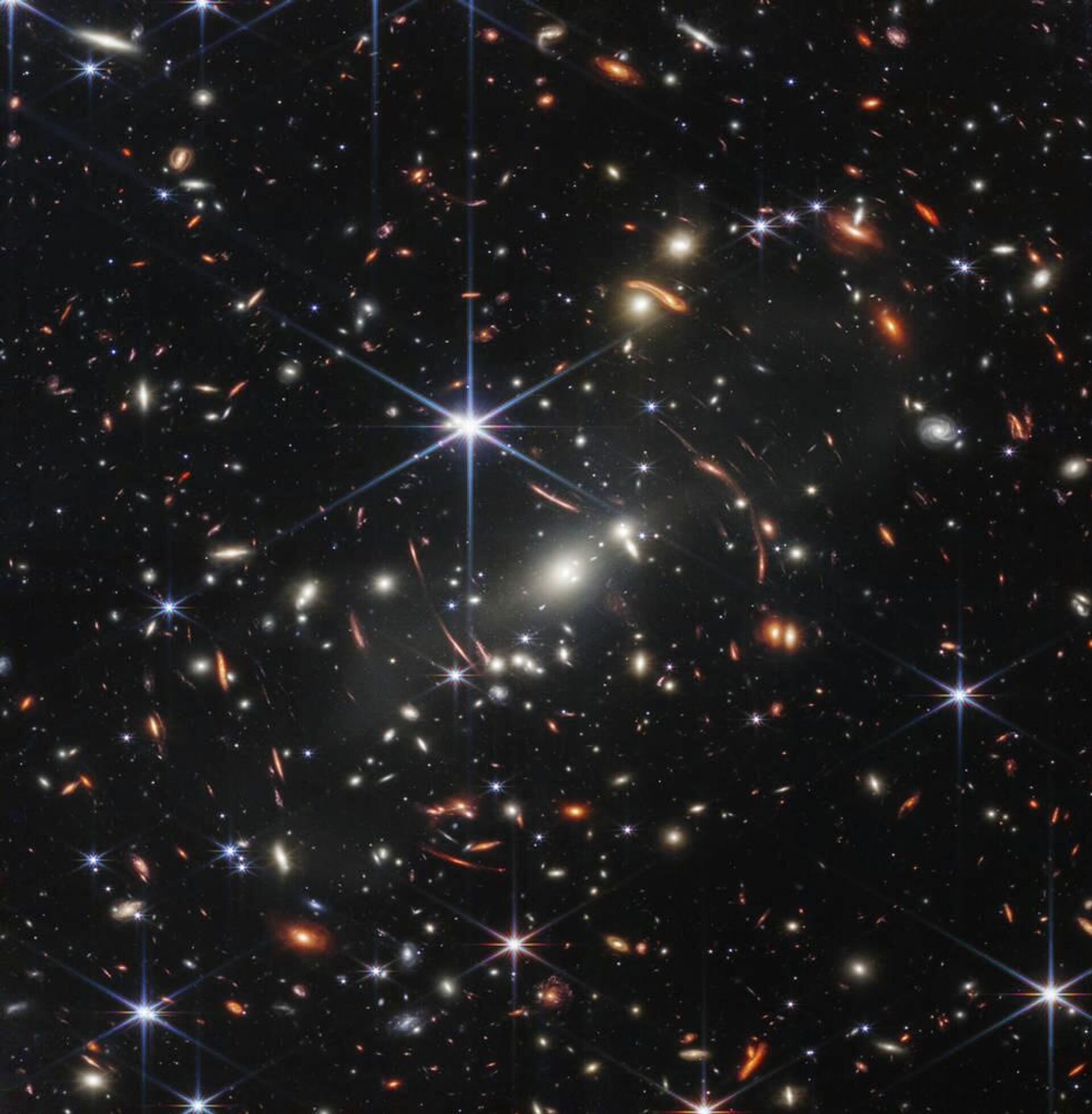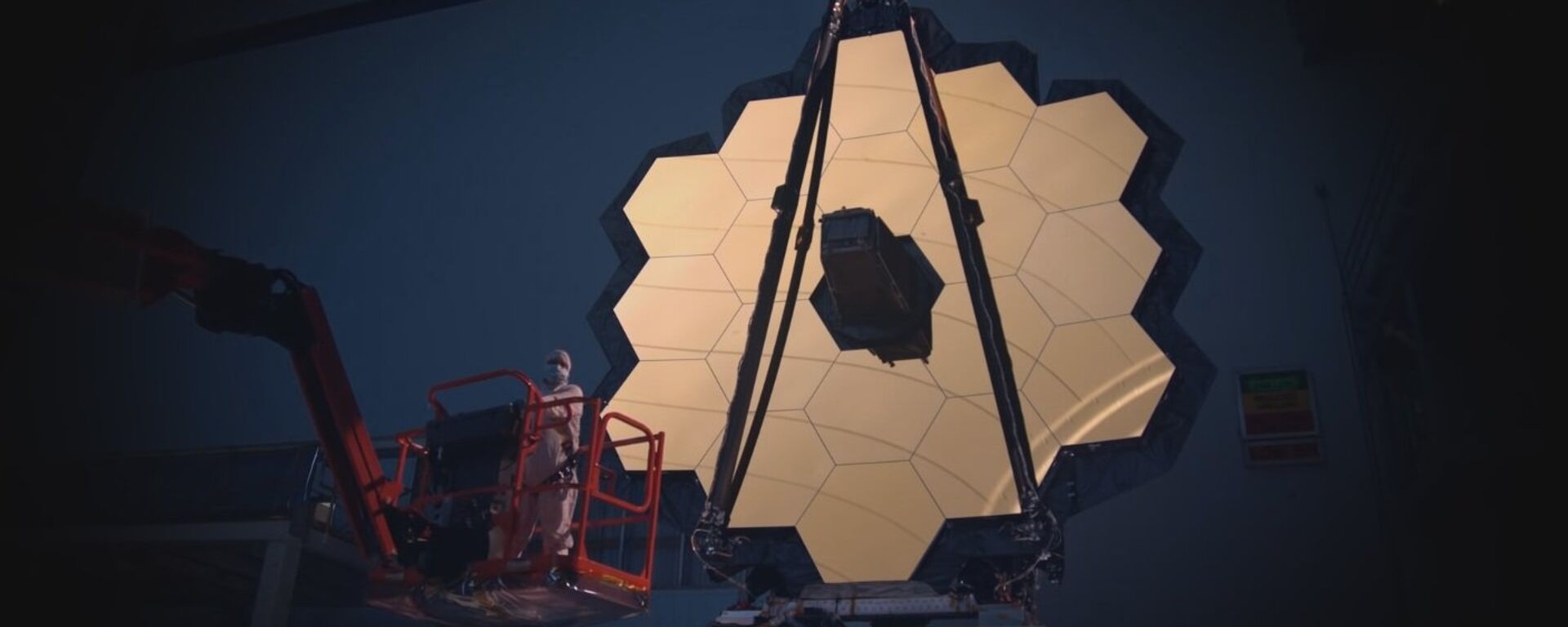'Deepest View of the Universe': NASA Reveals First Full Color Image From James Webb Space Telescope
22:30 GMT 11.07.2022 (Updated: 16:58 GMT 12.04.2023)

© NASA GSFC/CIL/Adriana Manrique Gutierrez
Subscribe
The James Webb Space Telescope (JWST)--humanity's largest and most complex space science observatory--is set to release a suite of full color images and data on Tuesday, July 12, at 10:30 a.m. Eastern Time.
The "deepest and sharpest infrared image of the distant universe to date" was unveiled at the White House on Monday, several hours ahead of NASA's live TV broadcast on the matter.
The historic image shows Webb's 'First Deep Field,' also known as galaxy cluster SMACS 0723.

NASA’s James Webb Space Telescope has produced the deepest and sharpest infrared image of the distant universe to date. Known as Webb’s First Deep Field, this image of galaxy cluster SMACS 0723 is overflowing with detail.
© NASA/Space Telescope Science Institute
The light seen in the image had been traveling for over 13 billion years, noted NASA Administrator Bill Nelson.
"Today is a historic day," US President Joe Biden said during a Monday news conference alongside Vice President Kamala Harris and NASA officials. "It’s a new window into the history of our universe and today we’re going to get a first glimpse of the light to shine through that window."
"America is defined by one single word — possibilities."
— The Associated Press (@AP) July 11, 2022
President Joe Biden reveals the first image from NASA’s new $10 billion James Webb Space Telescope — the deepest view of the cosmos ever captured. pic.twitter.com/CqgieFc5Lz
The deep field is a composite image captured by the spacecraft's Near-Infrared Camera (NIRCam), which compiles images at different wavelengths, resulting in "depths at infrared wavelengths beyond the Hubble Space Telescope’s deepest fields," according to NASA.
Furthermore, the JWST took approximately 12.5 hours to compile the image, versus a weekslong wait period for the Hubble Space Telescope to compile a similar composite.
HUBBLE vs JWST: Here's the difference. Welcome to a new era of astronomy. pic.twitter.com/ATIOhc2mnQ
— Ian Lauer (@ianlauerastro) July 11, 2022
The Hubble, optimized for shorter ultraviolet and visible wavelengths of light, can observe in near-infrared light and achieves its depth of field with two main curved optics, while the JWST uses deeper infrared vision and is equipped with a three-mirror design that provides a much wider field.
It is worth noting that the Hubble will remain in operation alongside the JWST for some time, and may even conduct concurrent joint observations.
The $10 billion JWST was developed via a partnership between NASA, the European Space Agency, and the Canadian Space Agency.
Launched from Earth on December 25, 2021, the space science observatory is presently orbiting some 1 million miles away and can be used to detect objects not visible to the human eye.
Scientists intend to use the JWST to probe for signs of life on other planets and study how the first stars and galaxies formed after the Big Bang. Future endeavors will compare modern galaxies to systems of the past.

